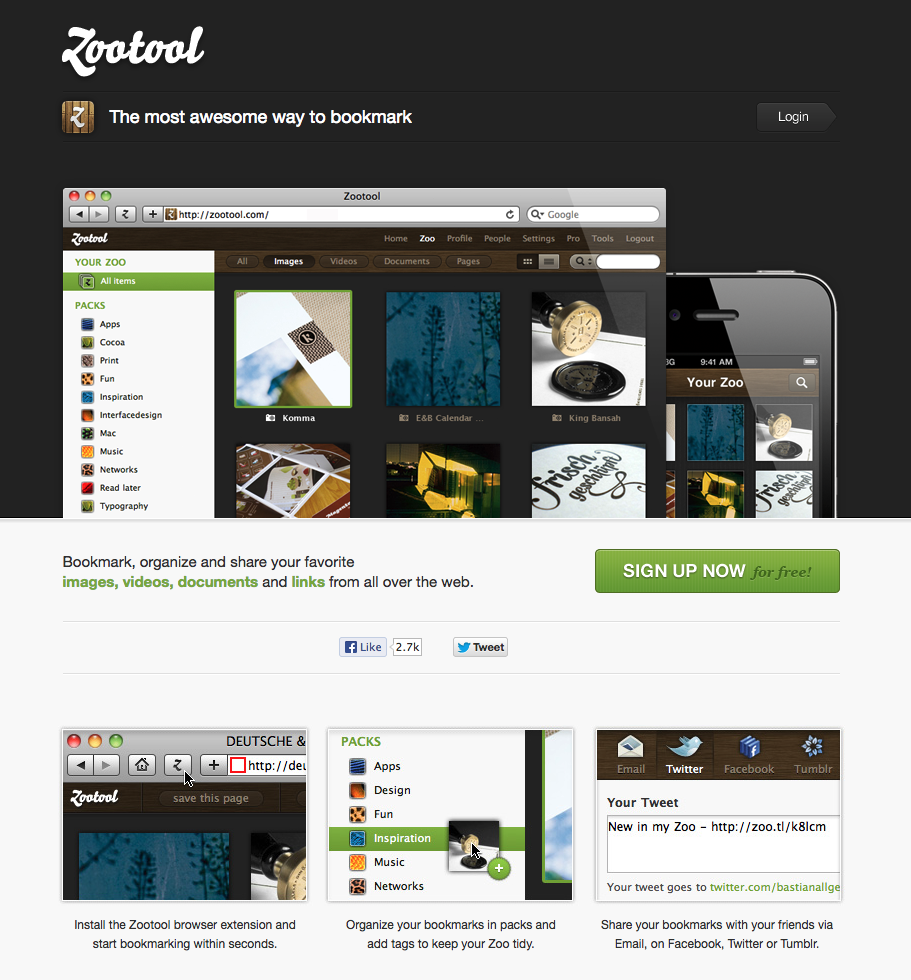2011
How it all started
In early 2011, a client approached me with a request for a custom solution to create HTML newsletters. It should be simple, cheap, and they needed it the next day. What sounded like a terrible project back then – and still does today – turned into a success story that lasts already for 10 years and has nothing to do with email newsletters.
I wrote a little PHP script that split custom syntax in text files into variables and injected those into a simple template engine. The input: plain text. The result: monstrous, table-based HTML for newsletters.
title: Issue 1
----
date: 2011-01-01
----
text: Hello worldIt felt like a breeze of fresh air after years of building big, database-driven systems. I was pretty sure the client would hate it. They loved it. It was simple, it was fast. They used NotePad and Filezilla and pumped out dozens of newsletter issues for thousands of customers.
A few weeks later, friends needed a website for their new design studio. I pitched the idea to extend the concept of that newsletter tool for their portfolio. Every project would get its own folder with the same kind of text file. Throw in some images and you’re done. They showed me how they organized their projects on their file server and I tried to stick to their file naming scheme as closely as possible. It all matched like a puzzle. They really enjoyed the effortless way to update their portfolio, and I was blown away by the possibilities of such a simple piece of code. The ideas around the concept grew, and they sent me their first client who wanted a similar site. The very first version of Kirby was born.

Not another failure, please
I wasn’t sure what to make of this new side project. I was doing client work, and at the same time running a bookmark service called Zootool. With more than 100,000 users, Zootool was successful on the outside. But it was a money grave and I saw countless open-source projects fail because of the same dilemma: Not enough time and not enough financial stability for the maintainer to keep it going. I wasn’t ready for yet another time and/or money grave.

I was a big fan of Shaun Inman – a designer and self-taught developer from the US. He was the creator of a fantastic little self-hosted analytics tool called Mint and an RSS reader called Fever. The idea of selling neatly packaged web apps seemed really appealing but wasn’t very common. He sold his apps for $30 per license and seemed to be quite successful with this approach.

So I spent the rest of 2011 building more early Kirby projects and testing the system with roughly 100 beta testers. I created a simple logo and a website and tried to figure out how to sell this thing online – wondering if anyone would ever buy it.

Nobody will pay for this
While I got a lot of positive reviews from beta testers (some of them still frequent Kirby users 10 years later), I also received exactly the kind of feedback I dreaded so much: Why would anybody pay for Kirby, when there are so many open-source CMSs out there?
My favourite support email arrived shortly after the launch:
Is it true that I have to pay for Kirby?
If yes, you just lost a customer!
I should have framed this.